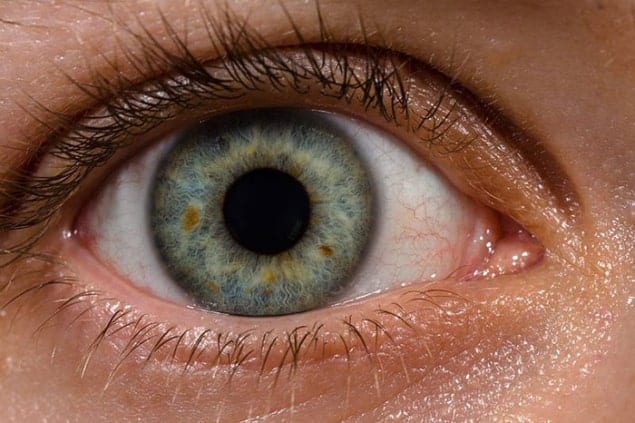
A new and faster way of tracking eye movements has been unveiled by researchers in Belgium and the Netherlands. Rather than using high-resolution digital cameras embedded in screens or glasses, the low-cost technology instead detects changes in electric field next to the eye. The team says that it could be used to create eye-tracking systems that are much faster and much cheaper than existing devices.
Tracking the motion of a person’s eyes as they look around has a wide range of applications from medical testing to computer gaming. While conventional systems can locate a person’s gaze, they are not fast enough to track the high-speed motion of the eyes. In particular, it is very hard to follow the eye jumping rapidly from one position to another involuntarily when a scene or object is scanned – what’s known as “saccades”. One solution is to use faster and higher resolution cameras, but that’s a very expensive option.
Naturally electrical
Now, however, Gabriel Squillace and colleagues at the IMEC microelectronics research centre in Belgium and the Holst Centre in the Netherlands have taken a completely different approach by measuring the changes in electrical fields that occur as the eye moves. “Human eyes have a natural electrical potential,” explains Squillace.
The team integrated four electrical sensors developed at IMEC into eyeglasses. Two sensors monitor the eyes’ vertical motion and two sensors monitor their horizontal motion. The team also developed an advanced computer algorithm that translates signals from the sensor into the positions of both eyes. The sensors are also able to measure other aspects of eye activity such as the speed of movement and the frequency and duration of blinks.
Augmented reality
Squillace says that IMEC is now developing commercial devices that can track the position of an eye in real time at a fifth of the cost and four times faster than what’s currently on the market. “IMEC’s ultimate goal is to develop a solution that can track the eye’s most rapid movements, such as saccades, enabling seamless real-time tracking for augmented-reality and virtual-reality applications,” he says.
These devices are now being tested and allow users to interact with screens by moving the cursor with their eyes. Specific blinking patterns can also be used to initiate specific actions such as selecting files, drag-and-dropping icons, and opening and closing software applications.



